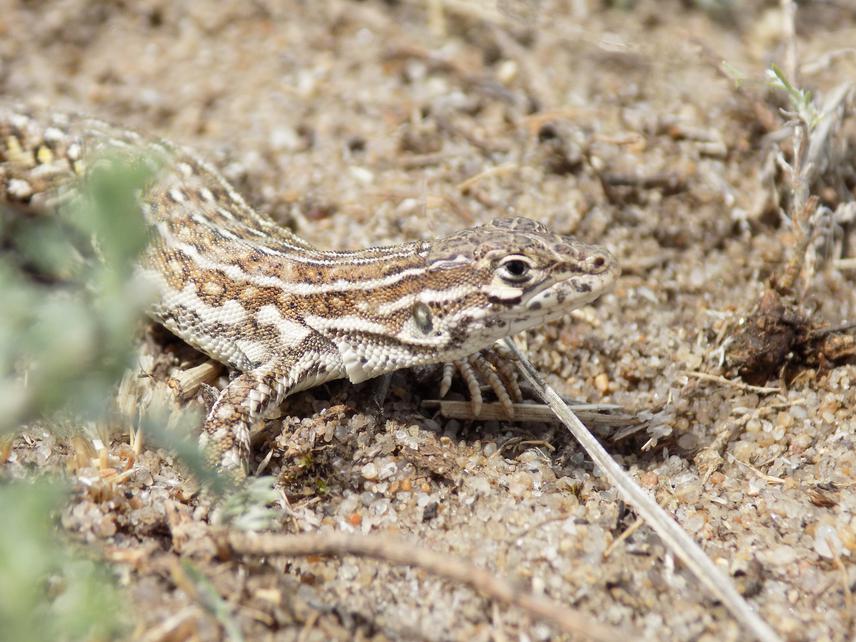Oleksandra Oskyrko
Other projects
5 Aug 2019
Assessment of Conservation Status of Habitats Important for Reptiles within the Southern Bug Eco-Corridor in the Steppe Zone of Ukraine
The availability of reliable maps that depict the historical and current distribution of reptile’s species constitutes an important component in conservation-related research. Many groups of reptiles suffer from direct and indirect anthropogenic impact, particularly as a result of their habitats’ loss and transformation. It means that study of possible ways of their habitats’ conservation is the first reliable step to save reptiles.

Eremias arguta, Lebedivka, territory of Ukrainian Bessarabia (Ukraine)
The one of the goals of the present study is to provide new data and filling gaps by making updated distribution maps for herpetofauna in the Ukrainian Bessarabia. This area is particularly valuable for local herpetofauna species most of which are protected on national or international level. Ukrainian Bessarabia has more than 2.5 million hectares of agricultural land, including more than 2 million hectares of arable land, more than 80 thousand hectares of vineyards and orchards. Also, tourism through the sea, therapeutic mud, mineral waters, create an exceptionally high recreational potential of Ukrainian Bessarabia. The information collected can be used to find the best solutions for the conservation and protection of fauna of this area. In this project we will assess the current status of most threatened focal reptilian species to assess human impacts on local ecosystems and to promote conservation. For this purpose:
1) we will put main effort to “white spots” in the study region;
2) will collect distributional data of the rare species;
3) will validate ambiguous old records where recent observations are absent.
Also, this territory is several dubious records for some species that very need conservation and it is a corridor for distribution of allochthonous species for Ukraine, that also can be dangerous for the local herpetofauna and need correct management. A better distributional knowledge from this less known region may allow better understanding of overall zoogeography that will be relevant for conservation and other activities useful for European and world herpetology.
Also, we continue our educational activities with the local population as in the previous project. In addition to working with locals and national park staff, we want to focus more on local journalists. From the previous project, we realized that most of the information locals receive from journalists and television. Often journalists are not properly aware of reptiles especially about snakes (incorrect species identification and recommendations). Therefore, the main emphasis in this project will be on the training of local journalists about reptiles with a focus on snakes.